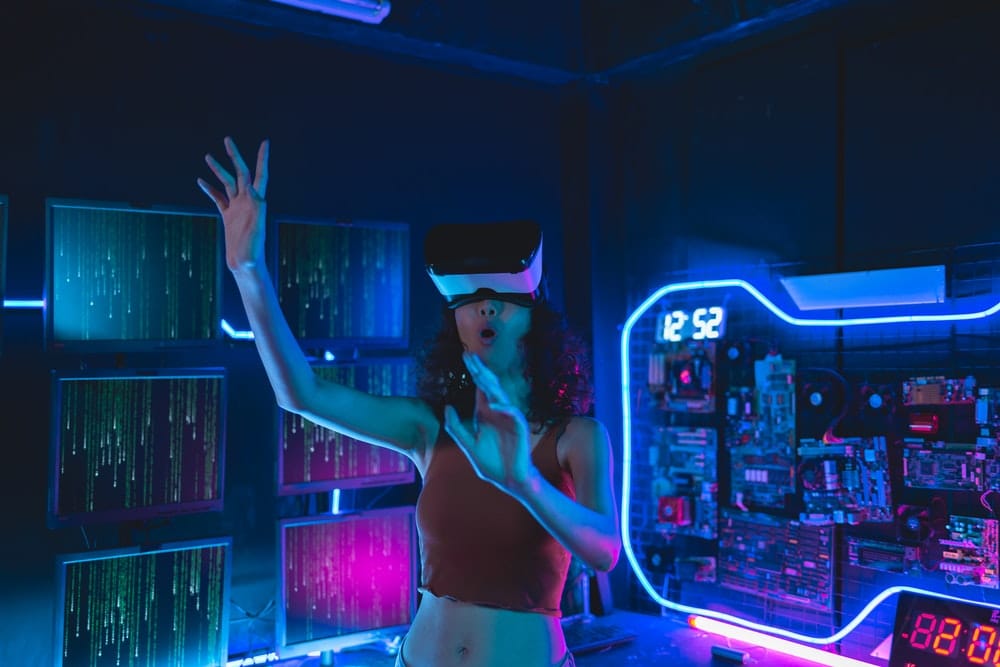The ongoing development of technology has opened new horizons in various spheres of life. Medical education is one such sphere that has greatly benefited from the advent of advanced technology. Particularly, the introduction of virtual reality (VR) and simulation in the field of healthcare training could potentially transform the conventional didactic learning methods. This article examines the impact of VR simulations on medical training and discusses whether they can enhance surgical outcomes and patient safety.
The Emergence of Virtual Reality in Medical Education
Over the years, the medical field has adopted numerous innovative teaching techniques to better equip healthcare professionals with the necessary skills and knowledge. Among these novel learning tools, VR technology has been a remarkable standout.
A lire en complément : Does the Use of Acupuncture in Conjunction with IVF Increase Pregnancy Success Rates?
Virtual reality, initially used in the gaming and entertainments sectors, has found its way into the medical education field. It presents an interactive, immersive, and realistic learning environment which allows medical students and professionals to practice and enhance their skills in a safe and controlled setting before applying them in real-life situations. This not only boosts their confidence but also significantly reduces the risk of errors when dealing with actual patients.
Moreover, research published in PubMed supports the effectiveness of VR in medical education. The studies showed that VR simulations help to improve the learners’ understanding and retention of complex medical concepts, sharpen their surgical skills, and promote collaborative learning.
A lire également : How Can a Plant-Based, Anti-Inflammatory Diet Impact the Prognosis of Autoimmune Diseases?
Virtual Reality and Surgical Skills Enhancement
In surgery, precision, accuracy, and speed are crucial. Traditional surgical training methods often involve a steep learning curve, which can be stressful for both the trainee surgeons and the patients. Virtual reality comes in as a game-changer in this aspect.
VR surgical simulation offers a learning platform where surgical trainees can practice, learn, and refine their skills without the need for a human patient. This technology allows them to experience a wide range of surgical scenarios, learn from their mistakes in real-time, and gain mastery over different surgical procedures.
Moreover, a study published in PubMed has established that VR surgical simulation training significantly enhances the technical skills of surgeons. It was found that trainees who used VR simulation were quicker and more accurate in performing surgical tasks compared to those trained using traditional methods.
Improving Patient Safety through VR Simulations
Patient safety is a critical concern in the healthcare sector. The primary goal of any medical intervention is to provide safe and effective care, and this is where VR simulations can play a significant role.
VR simulations in medical training offer a zero-risk environment for practice. The trainees can perform multiple procedures, make errors, and learn from them without any risk to a live patient. This significantly reduces the chances of medical errors in a real-life scenario, hence enhancing patient safety.
Furthermore, VR simulations facilitate experiential learning, where trainees can hone their skills in crisis management and decision-making, both of which are vital for patient safety. It allows them to experience a wide range of medical scenarios, understand the potential complications, and devise effective strategies to manage them.
Advancing Healthcare with VR Technology
The blending of VR technology with medical education holds immense potential for the future of healthcare. Beyond surgical training, VR simulations can also be used in other areas of healthcare such as diagnostic procedures, patient education, and rehabilitation therapy.
The use of VR technology in patient education allows the patients to better understand their health conditions and the proposed treatments, thereby enabling them to make informed decisions about their care.
In rehabilitation therapy, VR offers immersive therapeutic experiences that can enhance the effectiveness of the therapy and improve the patients’ recovery process. According to a study published in PubMed, VR-based rehabilitation programs have shown promising results in improving the motor functions of stroke patients.
The Future of VR in Medical Training
Despite the myriad benefits offered by VR simulations in medical training, their widespread adoption is still limited by issues such as the high cost of VR equipment and the lack of standardized VR training programs.
However, with the continuous advancements in technology and the emerging evidence supporting the effectiveness of VR in medical education, it’s expected that these challenges will be progressively addressed. The future may see a more extensive integration of VR technology in medical training, promising enhanced surgical outcomes, improved patient safety, and a revolutionized healthcare system.
In conclusion, the role of VR simulations in medical training cannot be overlooked. It offers a unique platform for experiential learning, skills enhancement, and safe practice, thereby potentially improving surgical outcomes and patient safety.
The Impact of VR Simulations on Surgical Education
The healthcare sector seeks to continually improve its training systems to provide the best possible care for patients. Virtual reality (VR) offers a cutting-edge solution to enhance surgical education. Through VR, healthcare professionals can practice surgical procedures in a safe, controlled environment before performing them in the operating room.
VR simulation-based training enables surgeons to become familiar with various surgical scenarios and potential complications. This hands-on experience allows them to develop critical decision-making skills and promotes a safety culture within the healthcare system.
A study published in Google Scholar showed that surgeons who trained using VR technology performed better in real-time surgical procedures. They exhibited increased accuracy, confidence, and speed, leading to improved patient outcomes.
Indeed, the use of VR in surgical education not only increases the competency of healthcare professionals but also reduces the risk to patients. By practicing in a simulated environment, surgeons can make and learn from their mistakes without any implications to patient safety. This feature of VR training is not only beneficial to the trainees but also to the health care system and patients.
Virtual reality enhances the traditional pathways of surgical training by providing a platform for continuous learning and improvement. It ensures that surgical trainees are better prepared for the operating room, thereby improving patient safety and surgical outcomes.
Virtual Reality and Augmented Reality: The Future of Healthcare
As we move forward, the integration of VR and augmented reality (AR) in healthcare is becoming more prevalent. These technologies provide a new dimension to medical training and patient care, offering an immersive, interactive, and real-time experience that traditional methods cannot provide.
Virtual reality and augmented reality can transform the way healthcare professionals learn and practice, from mastering surgical procedures to understanding complex medical concepts. Furthermore, these technologies can also enhance patient education, allowing individuals to visualize their health conditions and understand the treatments proposed.
Moreover, VR and AR have shown promising results in rehabilitation therapy. These technologies offer immersive therapeutic experiences that can improve the patients’ recovery process. For instance, a study published in PubMed demonstrated that VR-based rehabilitation programs significantly improved the motor functions of stroke patients.
Although the high cost of VR and AR equipment and the lack of standardized training programs are current challenges, continuous technological advancements and emerging evidence on their effectiveness in medical education hint at a promising future.
As we progress, it is expected that VR and AR will become more accessible and widely integrated into the healthcare system. These technologies will enhance the training of healthcare professionals, improve patient safety, and revolutionize the healthcare system.
Conclusion
The impact of virtual reality on medical training and patient safety is significant. Through the immersive and interactive learning environment that VR provides, healthcare professionals can enhance their skills and competence, consequently improving surgical outcomes. Moreover, VR simulations provide a zero-risk environment for learning, significantly reducing the chances of medical errors and enhancing patient safety.
Beyond surgical training, VR has vast potential in other areas of healthcare such as patient education and rehabilitation therapy. Despite the challenges faced, the continuous advancements in technology and the increasing evidence of VR’s effectiveness in medical education suggest a promising future.
As such, we can expect a more extensive integration of VR in medical training, which will transform the healthcare system and improve patient safety and surgical outcomes. The progressive adoption of VR technology promises a future where healthcare professionals are better equipped, and patients receive safer and more effective care.








